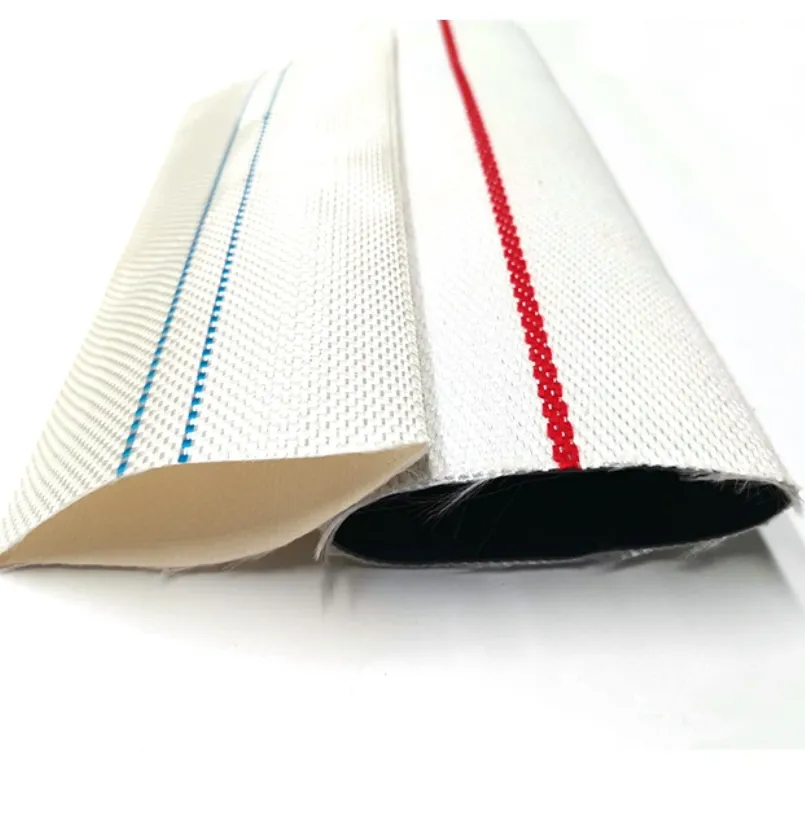lay flat discharge hose
Understanding Lay Flat Discharge Hoses A Comprehensive Overview
Lay flat discharge hoses are essential tools widely used in various industrial, agricultural, and construction applications. These hoses are designed for the efficient transfer of liquids, making them a crucial component for managing water and other fluids in different environments. In this article, we will explore what lay flat discharge hoses are, their features, applications, and maintenance tips for optimal performance.
What is a Lay Flat Discharge Hose?
A lay flat discharge hose is a flexible, lightweight hose that can be laid flat when not in use. Typically made from PVC, polyurethane, or other synthetic materials, these hoses are characterized by their flat profile, which allows for easy transport and storage. When filled with liquid, they expand into a circular cross-section, allowing for the efficient movement of fluids. Upon emptying, they return to their flat shape, saving valuable space.
Key Features
1. Durability Lay flat hoses are designed to withstand a variety of environmental conditions. They are resistant to abrasion, UV rays, and chemicals, which can be critical in harsh working conditions.
2. Lightweight The materials used in manufacturing lay flat hoses make them significantly lighter than traditional rubber hoses. This feature not only makes them easy to handle but also simplifies transportation and setup.
3. Flexible Their flexibility allows them to be maneuvered into tight spaces easily, making them suitable for diverse applications, from agriculture to disaster management.
4. Easy Storage After use, lay flat hoses can be rolled up or folded flat, occupying minimal storage space, which is particularly advantageous in environments where storage is at a premium.
Applications
1. Agriculture Lay flat hoses are commonly used in irrigation systems, enabling farmers to distribute water efficiently across fields. They are also vital for draining excess water during heavy rains.
lay flat discharge hose

2. Construction In construction sites, lay flat hoses facilitate the pumping out of water from excavations and trenches. Their ease of handling makes them an optimal choice for managing site drainage.
3. Firefighting Fire services utilize lay flat discharge hoses for their practicality in delivering water from hydrants or tanks to active fire scenes. The hoses can be quickly deployed and later stored with minimal hassle.
4. Waste Management These hoses are also used in waste management systems for transporting wastewater and other fluids, ensuring that the operation remains efficient and organized.
Maintenance Tips
To ensure the longevity and efficiency of lay flat discharge hoses, regular maintenance is essential
1. Cleaning After each use, it's important to clean the hose thoroughly to remove any debris or chemicals. This helps prevent wear and tear over time.
2. Storage When not in use, store the hose in a cool, dry place away from direct sunlight and extreme temperatures. This will help preserve its integrity and prevent premature deterioration.
3. Inspection Regularly inspect for leaks, tears, or any signs of wear. Early detection of issues can prevent more significant problems and costly replacements.
4. Proper Coiling When storing the hose, make sure to coil it properly to avoid kinks and twists that can damage its structure.
Conclusion
Lay flat discharge hoses are invaluable tools across various sectors due to their efficiency, portability, and versatility. Understanding their features and applications can help users choose the right product for their needs while ensuring proper maintenance can extend the lifespan of the hose. Whether in agriculture, construction, or firefighting, lay flat discharge hoses play a pivotal role in fluid management, proving their worth in numerous scenarios. Exploring further advancements in hose technology will continue to enhance their effectiveness and application in future endeavors.
-
Top Quality Oxy Acetylene Hoses for Sale Fit for Welding DemandsNewsJul.28,2025
-
The Future of Pneumatic Air Tubes in IndustryNewsJul.28,2025
-
Superior and Reliable LPG Hose Pipe Solutions for Every NeedNewsJul.28,2025
-
Exceptionally Durable and Versatile Premium Braided PVC TubingNewsJul.28,2025
-
Best Adapters for Connecting Garden Hose to PVC Pipe ConnectionsNewsJul.28,2025
-
The Essential Role of LPG Hoses in Safe and Efficient Gas DistributionNewsJul.16,2025














